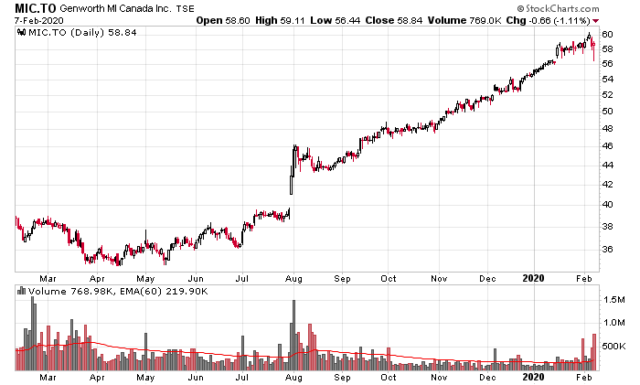(Past post on Yellow Pages – November 2019)
Yellow Pages (TSX: Y) reported Q4-2019 results today and it featured the first balance sheet since its 2012 recapitalization where it did not have any senior secured debt. This was eliminated at the beginning of December.
The quarter also featured a shade under $30 million in free cash generation, or a shade above $1/share. The most impressive aspect of the business is that cash flows through operating activities actually increased year-to-year despite revenues dropping from $577 to $403 million. It pays to focus on profitable business and management has had an insane laser focus on cost containment. I have not seen anything like it in my entire investing history.
A business cannot last very long if revenues drop 30% a year, and if they can stem this challenge, which I believe they will, the stock will be going much higher than the $11.70 it closed at yesterday.
The only debt remaining is a $107 million issue of convertible debentures (TSX: YPG.DB) which will be redeemed at the earliest possible moment at par, on May 31, 2021. If they redeem earlier they pay a 10% pre-payment fee, which makes no sense to do it currently. The conversion price is $19.04, and if they start making a significant impact on their revenue decline while keeping 38-40% EBITDA margins, it will likely be the holders that decide to convert into shares when the redemption is announced.
Finally, because the shackles of the senior secure debt are finally off, management has the flexibility of engaging in capital allocation decisions involving dividends and share buybacks. I was expecting some sort of equity buyback decision (there is a considerable incentive to seeing a higher stock price both from an insider perspective but also equitizing the convertible debenture), but instead, management announced they will pay 11 cent quarterly dividends in Q2-2020. This works out to a 3.8% yield on the $11.70 closing price.
A dividend also creates some interesting implications for how the stock trades. Once again, it will be on the radar of Canadian income ETFs. My suspicion is that Yellow Pages will continue to receive an uptick of activity as passive vehicles slowly get back into the stock. If the market capitalization gets even higher, it will start getting into the liquidity range of even more ETFs. This is yet another example of how momentum is a valid market strategy – passive vehicles often weight their investments by relative market capitalization, and when that goes up, you have to buy more without caring about the price…
My own model and fair value assessment of this stock suggest it should go higher. So far they have generated cash better than my initial estimates when I got into the stock in the first place.
Who would have ever thought – Yellow Pages started as an income trust and was a ‘stable’ producer of distributions. I bet few people thought in 2011 (when they slashed dividends to zero) that they’d ever see this day.
Disclosure – presently, this is my largest holding.
